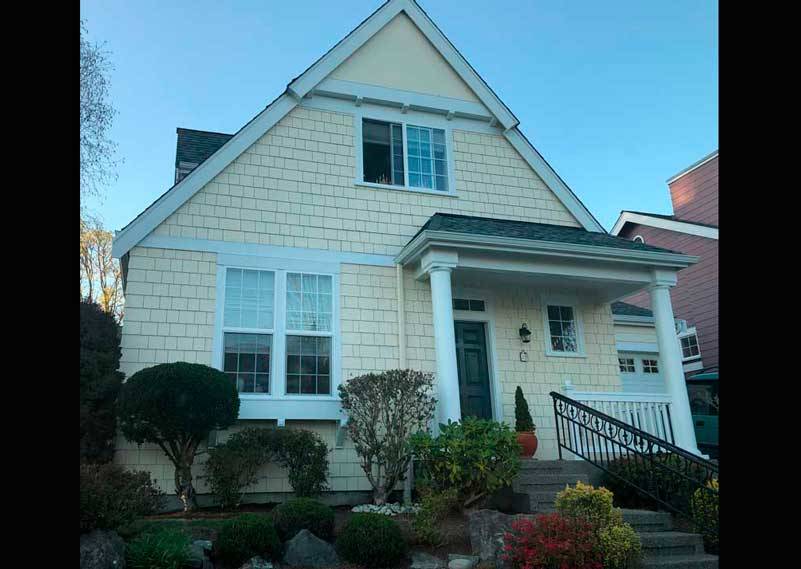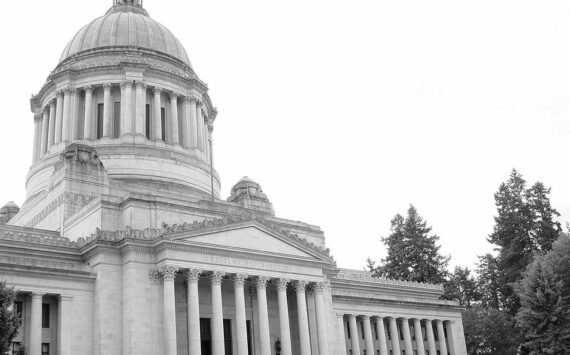By Morf Morford
Tacoma Daily Index
We use metaphors to give a visual image to a sometimes difficult or overly-complicated event or situation.
We might speak of a “war” between competitors, an economic “cliff”, or a financial “storm” approaching.
Or the ever-popular and increasingly irrelevant term “housing bubble”.
A literal bubble, is of course a tenuous, inherently fragile membrane which expands until it pops.
If there were any object no sane person would want to compare to something as crucial and central to any economy as housing, it would be a bubble.
But that, of course, is only the beginning.
Housing is literally where we live.
But as we have seen in the past few years, a flood of complicating factors, from historically low global interest rates, to a (temporary?) increase of people working from home, to resource shortages, supply line disruptions to fluctuating (if not entirely near fictional) currencies to too many other factors to even count, all the trends seem to be pointing in the same direction – an unrelenting cost increase for housing.
Every aspect of the real estate market so far in 2021 has been an indicator of the surreal nature of a once stable foundation of our economy.
Prices have gone up by the day – dramatically – as have the number of those literally priced out of the housing market and sent to join the ever-growing hordes of tent-dwellers on our city sidewalks and streets.
Spanaway was statistically the hottest real estate market in the entire country early on in 2021.
The year-over-year jump in typical home prices was nearly 18% in Tacoma compared to 8% in once-considered-hot-real-estate-market Seattle
Sale prices of more than $100,000 over initial asking price became common as virtually every house became the target of a bidding war between potential buyers.
In some neighborhoods of Tacoma, most houses went pending (meaning the seller accepted an offer) in just five days with nearly 74% of homes selling (sometimes for far more) above list price.
In many areas, both local and nationally, real estate prices grew by almost 20% since the previous year.
But over a five year time span, Seattle area (including parts of King, Pierce and Snohomish counties) home prices grew by more than 60%.
For a little perspective, consider this profile on what one million dollars will buy in each one of our states: https://www.workandmoney.com/s/1-million-homes-in-every-state-b80c2b6ea59c42b2?.
To describe this situation as untenable, would be an understatement.
But is it a bubble?
In a word, no.
Will this 20% increase go on forever?
No.
Will it collapse like previous “bubbles”?
Probably not.
Does anyone have any idea what the real estate market/landscape will look like in its next phase?
Nope.
Do some of us have a fairly good sense of what is likely to NOT happen in the next five years or so?
Yes.
This real estate market took many years to reach this point.
The basis points, from record low interest rates to increasing population, have been accruing for years if not decades.
The WFH (work from home) movement, or at least its intensity, took some of us by surprise, but it too, was only an exaggeration of an already-in-motion trend. (Working remotely has been forecast for decades, if not longer). We, and other forums, have been discussing WFH as an inevitable feature of the economy for years.
The devaluation of the US dollar (hence inflation of costs of the basics, especially those that are imported) has been a feature of hand-wringing business page editorials for years.
World population has been steadily rising, reaching a peak soon (though expected to drop, dramatically and irreversibly in a few decades – which will bring its own set of problems).
All of these mean that peak demand meets peak resource prices which meets declining dollar value in a context of shifting demographics and low interest rates which means that our current real estate feeding frenzy was about as predictable as any social/economic phenomena could ever be.
Which of these dynamics is likely to change soon?
Almost none of them.
Only one is likely to change any time soon; consumer demand.
More and more of us are acquiring a fatal case of sticker-shock.
In my neighborhood, $600,000 has become the base price for a standard home. $400,000 is the low-ball price for what used to be called a “starter home” – a basic two-bedroom, single-family, one-story house oriented toward first-home buyers.
The days of qualifying for a loan based on a single income are essentially, for most of us, long gone.
So if demand drops, then what?
Our housing market, like every other aspect of our economy, from breakfast cereal to automobiles, is consumer-driven.
What happens when consumers, on a scale few of us can imagine, opt out (voluntarily or not) of the housing market?
In short, no one really knows, but we can project based on what we have seen before.
The percentage of home-buyers (as opposed to renters) has been shrinking for many years.
No one knows what that critical-mass loss of home-buyers might be that sets our real estate market tumbling.
For the time being, sales are brisk.
A realtor in Tacoma’s North End told me recently that their formula was very simple; post a listing on Thursday, open-house over the weekend and sign the papers on Monday.
As average home buyers dwindle, speculators from individuals to investment hedge funds fill in the gap.
Home sales go from hot to hotter.
But the traditional market for new housing construction – the first-time buyer – has been abandoned.
Sales might be steady, even on the upswing, but increasingly buyers are not looking for homes – they are looking for investments.
Many, with prices inflated, stand semi-permanently vacant.
Is this sustainable?
For the short term, yes, long term, no.
One realtor told me of one large scale developer who, having planned out a large housing project of more than fifty homes, pre-sold every one, and then, thanks to rising resource costs filed for bankruptcy.
Was that an outlier or a sign of things to come?
I hate to say it, but all the indicators point to this as being a more than a unique business scenario.
With all the increasing digits, the stakes get higher with each passing increase in costs.
When the cost of plywood quadruples in a month, the projected bottom line – and especially any thoughts of profit – become just another mirage in the increasingly fantasy world of real estate.





